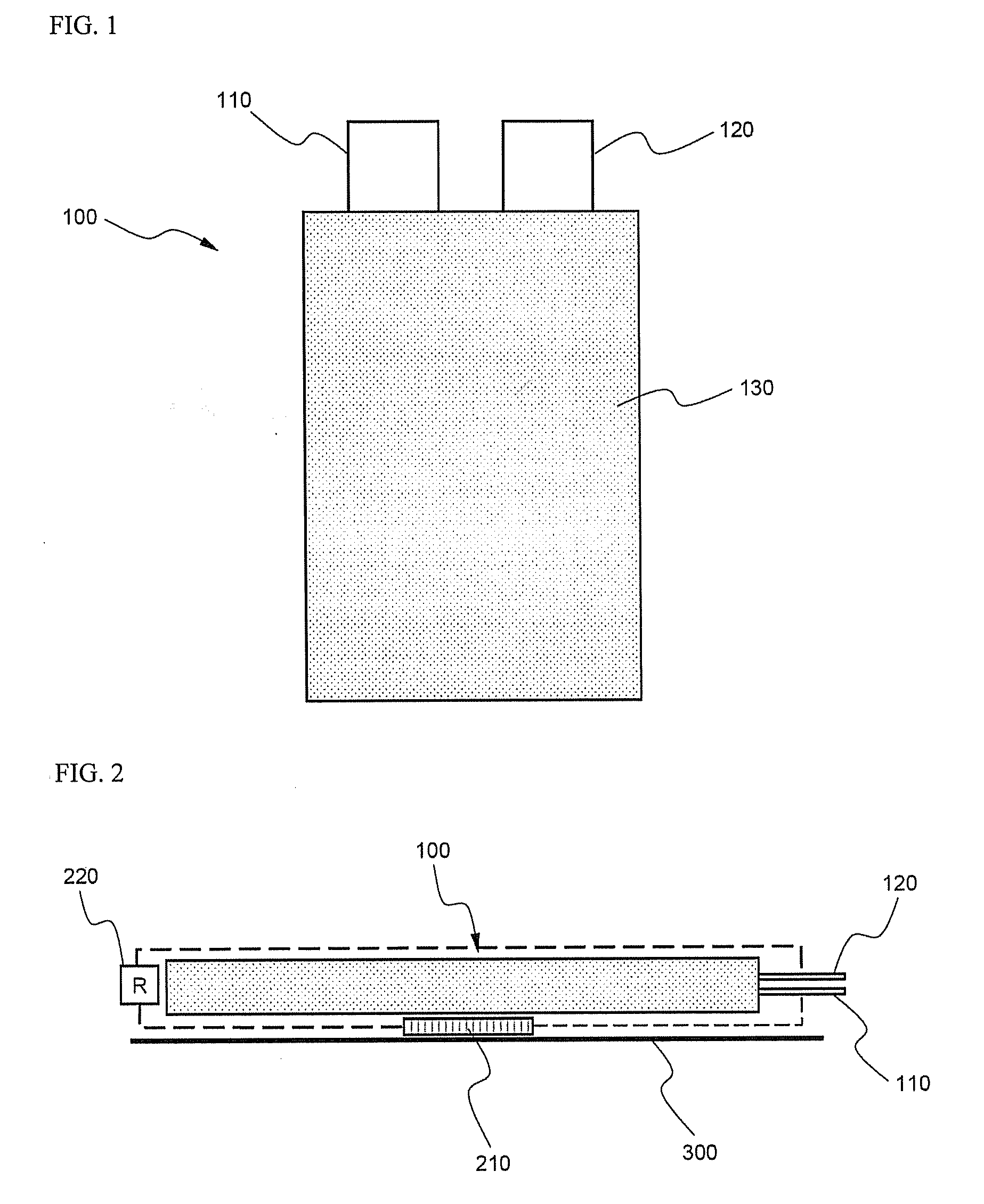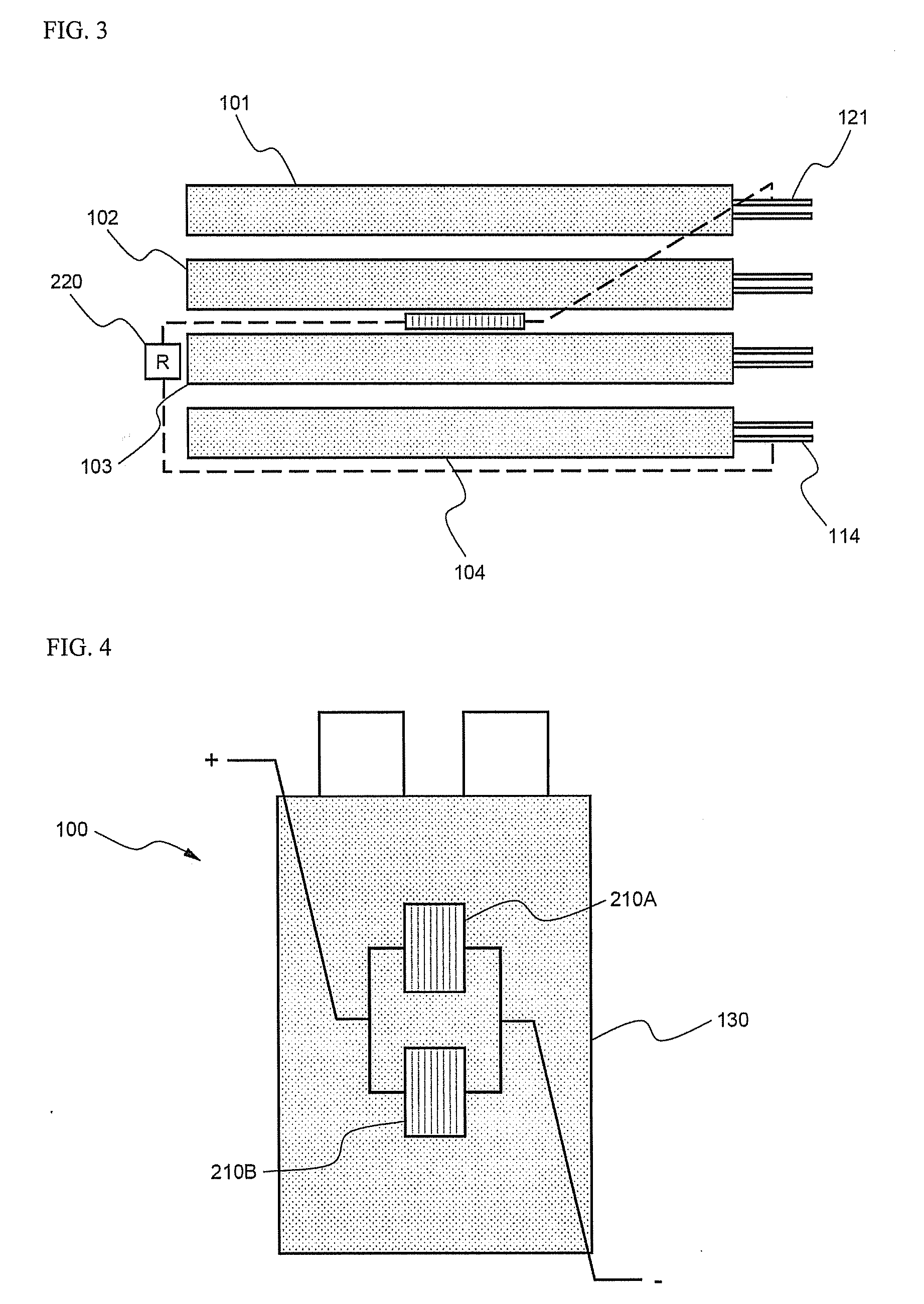Secondary battery employing safety device
a safety device and secondary battery technology, applied in secondary cell servicing/maintenance, cell components, electrical equipment, etc., can solve the problem of not realizing the discharging operation, and achieve the effect of reducing the effect of heat generation, consuming the energy of the battery cell, and effectively emitted
- Summary
- Abstract
- Description
- Claims
- Application Information
AI Technical Summary
Benefits of technology
Problems solved by technology
Method used
Image
Examples
Embodiment Construction
[0041] Now, preferred embodiments of the present invention will be described in detail with reference to the accompanying drawings. It should be noted, however, that the scope of the present invention is not limited by the illustrated embodiments.
[0042]FIG. 1 is a typical view illustrating the external appearance of a pouch-shaped battery cell 100 according to a preferred embodiment of the present invention. Referring to FIG. 1, the battery cell 100 is constructed in a structure in which an electrode assembly (not shown) is mounted in a pouch-shaped battery case 130, and a cathode tap 110 and an anode tap 120 protrude from the upper end of the battery case 130. The pouch-shaped battery case 130 is constructed in a laminate sheet structure including a metal layer and a resin layer and having an insulative outer surface. Consequently, when the inner pressure of the battery cell 100 is increased, the battery cell 100 easily swells.
[0043]FIGS. 2 and 3 are sectional views illustrating ...
PUM
| Property | Measurement | Unit |
|---|---|---|
| resistances | aaaaa | aaaaa |
| current | aaaaa | aaaaa |
| current | aaaaa | aaaaa |
Abstract
Description
Claims
Application Information
 Login to View More
Login to View More - R&D
- Intellectual Property
- Life Sciences
- Materials
- Tech Scout
- Unparalleled Data Quality
- Higher Quality Content
- 60% Fewer Hallucinations
Browse by: Latest US Patents, China's latest patents, Technical Efficacy Thesaurus, Application Domain, Technology Topic, Popular Technical Reports.
© 2025 PatSnap. All rights reserved.Legal|Privacy policy|Modern Slavery Act Transparency Statement|Sitemap|About US| Contact US: help@patsnap.com



